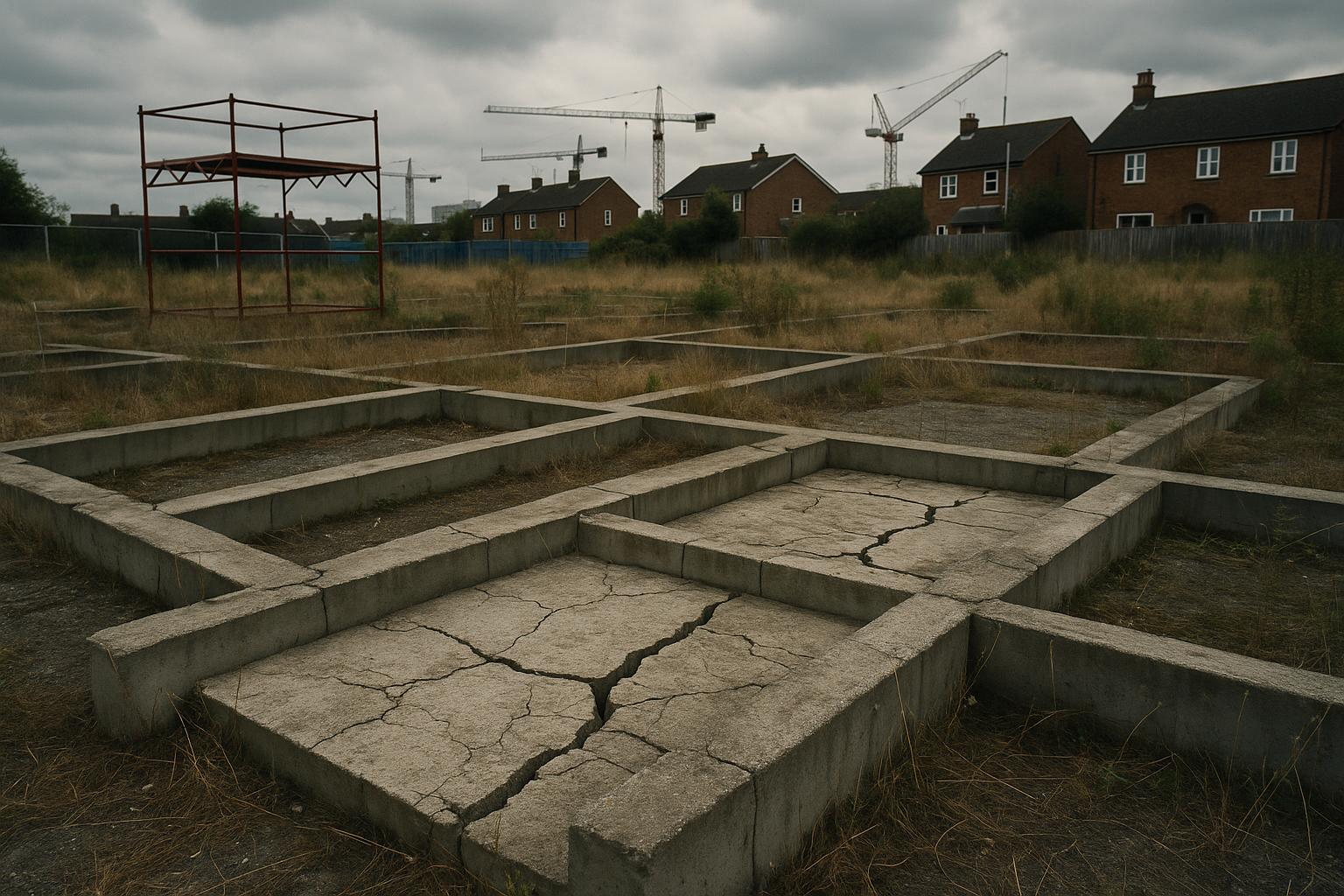UK housing construction activity shows a complex picture in mid-2025, marked by a notable rise in project starts contrasted with significant declines in contract awards and planning approvals. According to Construction News, residential project starts in July were 24% higher year-on-year, despite slipping 1% from the preceding quarter. Notably, smaller projects under £100 million performed strongly, growing 10% quarter-on-quarter and standing 25% above the previous year. However, the sector faces headwinds, with main contract awards down 38% and detailed planning approvals dropping 47% compared to 2024. The overall growth masks declines in several project categories and widespread weakening in approvals across all UK regions.
Private housing remains the dominant sector within residential construction, accounting for 64% of project starts and expanding 72% year-on-year to a total value of £8.34 billion. Student accommodation starts doubled compared to last year, reaching £849 million, though private apartment starts fell 12% to £2.56 billion. Regionally, the South East led residential project starts with £1.87 billion despite a 14% year-on-year decline, while Yorkshire & the Humber and Scotland experienced sharp increases of 138% and 149%, respectively. London, however, saw a 55% slump in detailed planning approvals and a 16% fall in industrial starts, highlighting uneven regional dynamics.
Industry sentiment about housing delivery is mixed, mirroring the uneven construction data. The UK homebuilder Bellway expressed optimism, expecting to build at least 11% more homes in the year ending July 2025, citing improving buyer sentiment supported by decreasing borrowing costs and Labour government policies. Bellway's pre-tax profit exceeded analyst forecasts, and its forward order book grew by 18.4%, reflecting sustained demand. Conversely, Barratt Developments projects a 7% fall in homebuilding due to high mortgage rates and broader economic challenges, impacting confidence within the sector. These conflicting forecasts underscore uncertainties in the housing market’s recovery trajectory.
Housebuilding is also hampered by regulatory delays, especially at the Building Safety Regulator (BSR). According to a Financial Times report citing a Royal Institute of Chartered Surveyors survey, over 60% of respondents identified regulatory and planning holdups, particularly for high-rise residential approvals, as key barriers to construction growth. These delays contribute to stagnant construction workloads and contraction in housing-related sectors, jeopardising government housing targets. Despite infrastructure projects providing some stability, public, private, commercial, and industrial building sectors are facing declines.
From a broader economic perspective, recent data from the Office for National Statistics reveals a slight fall in overall construction output in May 2025, driven by decreases in repair and maintenance work. New construction saw modest growth, but five out of nine construction sectors recorded output declines. This mixed performance aligns with Glenigan’s market update, which reported strong growth in private housing starts—up 76% quarter-on-quarter—but flagged labour shortages as a growing risk, with an estimated shortfall of 252,000 workers by 2028. The government has pledged £600 million in skills funding to address this gap, yet implementation delays remain a concern.
In the affordable housing domain, funding and financial viability challenges are escalating. Housing associations in England report increasing difficulties in financing new affordable homes amid rising interest rates, construction costs, and government funding cuts. Clare Miller, chief executive of Clarion Housing Group, highlighted the sector’s struggles despite delivering nearly 10,000 homes in five years. This funding squeeze threatens the supply of affordable housing and, by extension, the broader construction sector reliant on these projects. The government’s £39 million commitment in the Spending Review aims to support meeting a 1.5 million social housing target, but the scale of the challenge remains considerable.
In summary, UK housing construction in 2025 is characterised by a cautious optimism buoyed by rising project starts and supportive market signals, tempered by significant regulatory, economic, and financial obstacles. Regional disparities and segment-specific challenges illustrate a sector in transition, influenced heavily by policy direction, mortgage market conditions, and labour market constraints. Meeting national housing goals will require addressing these multifaceted issues, including streamlining regulatory processes, securing sustainable funding for affordable housing, and ramping up workforce capacity.
📌 Reference Map:
- Paragraph 1 – [1], [6]
- Paragraph 2 – [1]
- Paragraph 3 – [2], [5]
- Paragraph 4 – [3]
- Paragraph 5 – [4], [6]
- Paragraph 6 – [7], [1]
- Paragraph 7 – [1], [2], [3], [4], [5], [6], [7]
Source: Noah Wire Services
